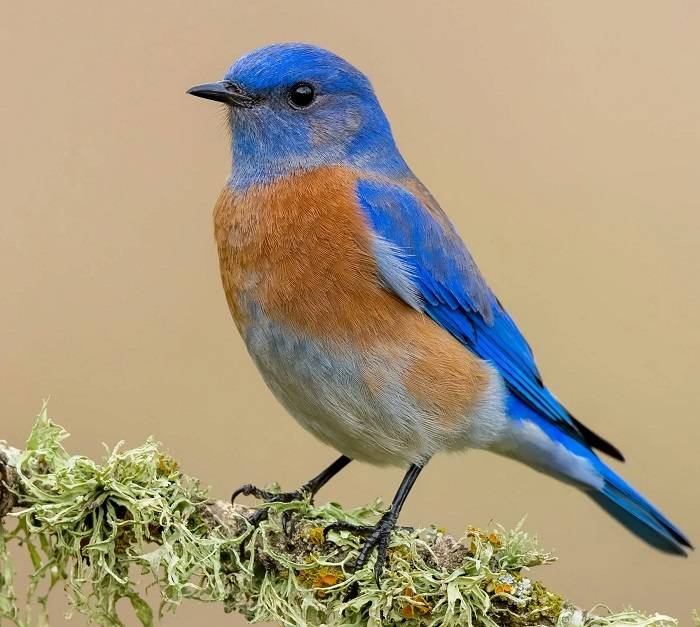In the rich tapestry of the United States’ natural heritage, each state boasts its own unique symbols that reflect its culture, history, and natural beauty. For the Empire State of New York, one of the most iconic symbols is its state bird: the Eastern Bluebird (Sialia sialis). With its vibrant plumage, melodious song, and widespread presence throughout the state, the Eastern Bluebird holds a special place in the hearts of New Yorkers and serves as a beloved emblem of the state’s rich avian diversity. In this comprehensive exploration, we embark on a journey into the world of the New York State Bird, uncovering its natural history, cultural significance, and the conservation efforts aimed at ensuring its continued presence in the Empire State.
The Eastern Bluebird – A Symbol of Hope and Resilience

As the official state bird of New York, the Eastern Bluebird embodies the spirit of resilience, adaptability, and renewal that characterizes the Empire State. With its brilliant blue plumage, russet breast, and cheerful song, the Eastern Bluebird is a welcome sight in meadows, fields, and suburban neighborhoods throughout the state, bringing joy and beauty to all who encounter it. Despite facing numerous challenges, including habitat loss, predation, and competition from invasive species, the Eastern Bluebird has persisted, thanks in part to the efforts of conservationists, volunteers, and ordinary citizens who have worked tirelessly to protect and preserve its habitat.
Natural History: The Life and Times of the Eastern Bluebird
The Eastern Bluebird is a member of the thrush family (Turdidae), which includes other familiar species such as robins and thrushes. Native to eastern North America, the Eastern Bluebird is primarily found in open woodlands, farmlands, and suburban areas, where it feeds on a diet of insects, berries, and other small invertebrates. During the breeding season, male bluebirds perform elaborate courtship displays to attract mates, including aerial acrobatics and the presentation of nesting materials. Once a mate is chosen, the female bluebird will construct a nest in a natural cavity or artificial nest box, where she will lay a clutch of eggs and raise her young with the help of her mate.
Cultural Significance: From Folklore to Festivals
Throughout history, birds have held a special place in human culture, serving as symbols of freedom, beauty, and transcendence. For the Eastern Bluebird, its cultural significance extends beyond its status as the official state bird of New York – it is also celebrated in folklore, literature, and art as a harbinger of spring and a symbol of hope and renewal. In addition to its cultural significance, the Eastern Bluebird is also celebrated through annual festivals and events, including the New York State Bluebird Society’s Bluebird Festival, which brings together bird enthusiasts, conservationists, and nature lovers to celebrate the beauty and diversity of New York’s avian fauna.
Conservation Efforts: Protecting the Eastern Bluebird’s Future
Despite its widespread presence in New York and across eastern North America, the Eastern Bluebird faces numerous threats to its survival, including habitat loss, pesticide use, and competition from invasive species such as the European Starling and House Sparrow. To address these challenges, conservationists, volunteers, and concerned citizens have implemented a variety of measures to protect and preserve the Eastern Bluebird’s habitat, including the installation of nest boxes, habitat restoration projects, and public education and outreach initiatives aimed at raising awareness about the importance of conservation and habitat protection.
Citizen Science: Engaging the Public in Conservation
One of the most effective tools in the conservation of the Eastern Bluebird is citizen science, which harnesses the power of ordinary citizens to collect valuable data on bird populations and behavior. Through programs such as the Cornell Lab of Ornithology’s NestWatch and the North American Bluebird Society’s Nest Box Monitoring Program, volunteers across New York and beyond have contributed invaluable information on the breeding success, nesting habits, and population trends of Eastern Bluebirds and other cavity-nesting birds. By engaging the public in conservation efforts, citizen science initiatives empower individuals to make a meaningful contribution to the protection and preservation of the Eastern Bluebird and its habitat.
New York State Bird
In conclusion, the Eastern Bluebird serves as a shining example of the beauty, resilience, and adaptability of New York’s avian fauna. As the official state bird of New York, the Eastern Bluebird embodies the spirit of hope and renewal that characterizes the Empire State, bringing joy and beauty to all who encounter it. Through the efforts of conservationists, volunteers, and concerned citizens, the Eastern Bluebird’s future is bright, ensuring that future generations of New Yorkers will continue to marvel at the sight of this beloved emblem of the Empire State. So, the next time you spot a flash of blue darting across a meadow or perched atop a nest box, take a moment to appreciate the beauty and diversity of New York’s avian fauna – and remember the Eastern Bluebird, the beloved symbol of hope and resilience in the Empire State.



